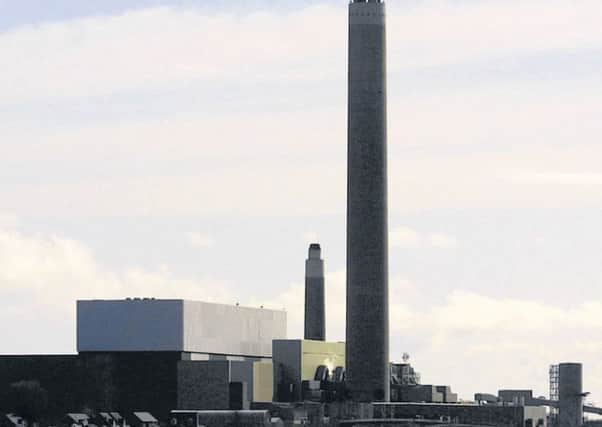Power security fears as Kilroot to shut in May


The decision is as a direct result of the introduction of a new all-Ireland electricity market from May – something which gives added political significance to the development, with the Province now becoming more dependent on the Republic for its electricity.
AES, the American owners of the two power stations which supply the bulk of Northern Ireland’s electricity, made the dramatic announcement last night, throwing into doubt the jobs – many of them highly skilled – of the 270 employees at the two sites and the 120 full-time contractors who work at the Carrickfergus and Islandmagee plants.
Advertisement
Hide AdAdvertisement
Hide AdThe catalyst for the decision has been the fact that Kilroot, which has been in operation since 1981, and part of Ballylumford – Northern Ireland’s largest power plant – lost out in the first auction of the new all-island market. That auction was run by the System Operator Northern Ireland (SONI), which is owned by Eirgrid – a company wholly-owned by the Irish Government. AES said that the decision sent “a strong signal” to it “to exit the market”.
The development raises major questions about the security of Northern Ireland’s electricity supply, potentially removing 36% of ‘dispatchable capacity’ – power which can be turned on or off by grid operators – by the end of this year.
Even prior to this decision, there have been long-standing concerns, which were expressed forthrightly in a recent House of Commons report, about whether there was enough generating capacity if there was a significant failure at times of high energy consumption.
Now Northern Ireland will itself be enormously dependent on imported gas for all of Ballylumford and Coolkeragh.
Advertisement
Hide AdAdvertisement
Hide AdBoth of those plants are fuelled using the Scotland-Northern Ireland gas pipeline, leaving them vulnerable if there was any problem with that pipeline. However, Coolkeeragh also has access to the Republic of Ireland’s gas network, while both stations have backup systems and must store enough fuel to run at maximum capacity for five days if there is a problem with the gas supply. Northern Ireland’s energy market has become increasingly diversified in recent years with renewables – particularly wind – now playing a key role. However, wind energy is not reliable, meaning that large power plants are critical to maintaining supplies when there is no wind.
AES is planning to close the 513MW coal-fired part of Kilroot, which makes up almost 80% of the station’s capacity. The liquid gas portion of the station is only used in times of exceptionally high demand, running for about 2-4% of the year. And in December it said that it plans to close one unit in station B at Ballylumford, which can supply 145MW.
AES are now understood to be making a formal request to the Northern Ireland Utility Regulator for a derogation from their commitment to keep the plants operational.
It is not clear what would happen if the regulator - who just this week welcomed the new all-island market as good news for consumers who it said should see smaller bills as a result- refused that request.
Advertisement
Hide AdAdvertisement
Hide AdAES said that without new contracts the Kilroot and Ballylumford units could not cover overheads. The company’s UK and Ireland President Ian Luney said: “In addition to capacity, Kilroot Power Station has been providing reliable and critical energy and system services for Northern Ireland.
“Over the last three years Kilroot has been integral to the security of supply in Northern Ireland. The Kilroot units that are set to close met 22% of local electricity demand, so we are surprised by SONI’s decision which indicates that the generation capacity would not be needed for security of supply this coming winter.”
Mr Luney added that he was “concerned that the removal of capacity at Kilroot and Ballylumford could contribute to a significant risk to the security and stability of supply in Northern Ireland”.
Ulster University’s senior economist, Esmond Birnie, said that last year the then economy minister Simon Hamilton said “security of supply” was the “biggest issue” relating to the Northern Ireland electricity market.
Advertisement
Hide AdAdvertisement
Hide AdDr Birnie said that Kilroot “had a longer term question over its future in any case given its dependence on highly polluting coal burning” but said that the development “does beg the question how a potentially very large supply shortfall will be met”, particularly because it will be several years before the proposed north-south electricity interconnector is likely to be operational.
TUV leader Jim Allister, a long-standing critic of the move to an all-island market, said: “The severe threat of the loss of Kilroot power station is, I fear, the first of many hits Northern Ireland will take in consequence of the dash to establish the Irish Single Electricity Market in May 2018.
“As we lose generating capacity and control Northern Ireland may well be at the painful end of the ROI orientated change, which is being rushed in with no proper transition period or protections on security of supply.”
Local Alliance MLA Stewart Dickson, who supports the all-island market, also expressed concern about decision which seemed “premature and counter-productive”.